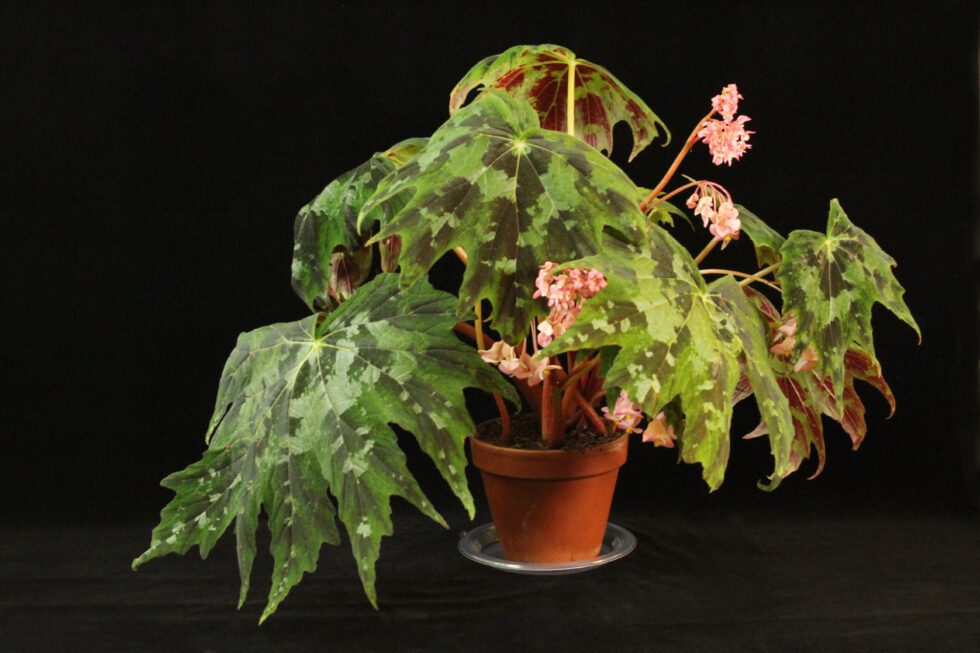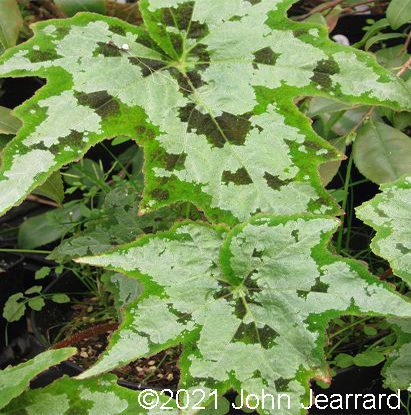B. taliensis is a tuberous species from China which grows in shrubberies or mixed forests at high altitudes (about 6,000 feet). It was published by Gagnepain in the Bulletin of the Paris Museum of Natural History in 1919.
The leaves are basal in that they all come out of tuber directly without an upright stem. The leaves are parted and are varied from nearly solid green to a wonderful patterning of green, dark brown and a silvery white.
Branch member Morris Mueller received unnamed tubers of this plant 3 years ago from Gene Salisbury of Oklahoma to test grow. It has bloomed for Morris under lights and the flowers were a soft pink. The next year Morris and I ordered tubers from Chen Yi Nursery in China. They came labeled as T-113. Heronswood Nursery in Washington State has also carried this plant. Morris sent a copy of the picture of the plant from the Chinese Nursery to Mark Tebbitt of the Science Department Staff of the Brooklyn Botanic Garden and author of the upcoming Timber Press book, Begonias – Cultivation, Identification, and Natural History for possible identification and he reported back that the plant was B. taliensis.
I grew it outside last year in 4″ pots. Like many other high altitude tuberous plants, begonias and otherwise, it did not like the heat. Tubers the size of quarters became dime-size by this spring. This year I moved them up into 6 inch or bigger pots and sank them in the garden. That is why pot rims are visible in the pictures. So far, so good. The leaves are healthier and much bigger, and the plants seem more robust. I have tried this with Andean tuberous species and tuberous impatiens, I. tinctoria. So far, the results are encouraging.
I remember being told that tuberhybrida in Sacramento were challenging not because of the heat per se, but because, when grown in pots, their roots could heat up to the point of plant collapse during our 100° plus days. Sinking the pots in the ground or planting tuberous directly in the garden overcame a lot of the problem caused by heat.



